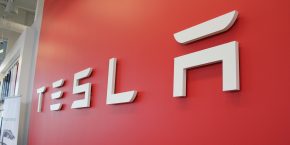
As we reported yesterday, Tesla is suing its former Director of Autopilot programs, Sterling Anderson. The company claims that he allegedly poached Tesla employees and stole confidential information in order to start a competing company with Chris Urmson, the former head of Google’s self-driving program.
Anderson denies the allegations, but regardless of what happened, Tesla made a bold claim about the motive behind launching his new company and in the process, they took a solid swipe at GM and Uber.
In the suit, Tesla boasts about being the leader in the autonomous driving space:
“The Autopilot features that are built into every Tesla vehicles, and continually updated through free over-the-air updates, are widely regarded as the most advanced, safest, and most reliable technology in the autonomous area.”
While there’s no perfect benchmark, Tesla Autopilot has been shown outperforming Mercedes, Hyundai and Cadillac in third-party tests and the company has a more aggressive timeline to full autonomy than any other company.
Tesla claims that its lead pushed other automakers into acquisition mode and to spend big money on small startups without any real product. The company’s lawyers wrote in the suit:
“In their zeal to play catch-up, traditional automakers have created a get-rich-quick environment. Small teams of programmers with little more than demoware have been bought for as much as a billion dollars.”
They could have left it to us to connect the dots, but no. They even gave examples – taking direct swipes at GM and Uber in the process:
“Cruise Automation, a 40-person firm, was purchased by General Motors in July 2016 for nearly $1 billion. In August 2016, Uber acquired Otto, another self-driving startup that had been founded only seven months earlier, in a deal worth more than $680 million.”
Both GM and Uber had efforts in autonomous driving before those acquisitions last year, but they certainly kick-started those efforts. The startups were integrated into each company and now represent the bulk of their respective self-driving programs.
While it’s certainly true that both startups had little to show for when they were acquired, they now have made some decent progress. Otto completed a semi-autonomous shipment with one of its trucks a few months back and Cruise has been operating a test fleet of autonomous Chevy Bolt EV in San Francisco. They recently released this video of what they claim is a fully autonomous drive:
The price tags associated with the acquisitions made the founders of the startups very rich – or richer in the case of Kyle Vogt who already made a decent fortune when selling his other company, Twitch.tv, to Amazon.
Tesla suggests that Anderson and Urmson poached Tesla employees and obtained data from its Autopilot program in order to quickly put a company together to sell to another automaker and “take a run at a similar fortune.”
While Tesla’s claim about their motivation behind launching the new venture is hard to prove, the way it was formulated still tells us a lot about how the company sees itself in the autonomous driving space.
It certainly appears boastful, but some other high-profile players in the industry agree. For example, NVIDIA CEO Jen-Hsun Huang, whose company is supplying computing power for several self-driving programs, including Tesla’s, said that the Autopilot is “basically five years ahead” and that “anybody who’s talking about 2021 is just a non-starter anymore.”
Currently, only Tesla and Waymo, formerly Google’s self-driving program, have goals to bring a fully autonomous system to market within the next year.
FTC: We use income earning auto affiliate links. More.




Comments